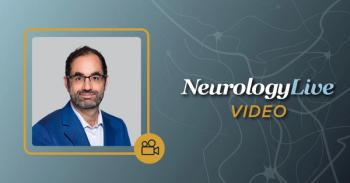
Telemedicine Cognitive Behavioral Therapy for Insomnia Equals Face-to-Face Interactions
The efficacy of CBT using the American Academy of Sleep Medicine (AASM) SleepTM platform has been shown to be similarly efficacious to face-to-face physician encounters in 30 adults with chronic insomnia.
Cognitive behavioral therapy (CBT) for the treatment of insomnia, when delivered via telemedicine using the American Academy of Sleep Medicine (AASM) SleepTM platform, is equally efficacious to CBT conducted in face-to-face.1
New findings presented at
The investigators, led by J. Todd Arnedt, PhD, professor, clinical psychology, cognitive & behavioral psychology, behavioral sleep medicine, Michigan Medicine, noted that the use of CBT in the treatment of insomnia is very effective, “but few evidence-based modalities exist beyond face-to-face to facilitate dissemination.” They detailed that the increasing use of telemedicine as a possible approach, “but its efficacy and acceptability for delivering CBT for insomnia is unknown,” thus prompting the study.
The platform, according to AASM, is “a state-of-the-art telemedicine system for sleep medicine professionals, accredited sleep centers and durable medical equipment (DME) providers.” It offers 2 HIPAA-complaint variations which allow for secure video encounters with physicians.2
Analysis did reveal evidence of the main effects of Time on all of the sleep diary measures that the investigators included. They were: sleep latency (F = 25.1; df = 1,28; P <.001); wake after sleep onset (F = 37.0, df = 1,28; P <.001); total sleep time (F = 7.9; df = 1,28; P <.009); and sleep efficiency (F = 62.7; df = 1,28; P <.001).
Additionally, pre-to post-treatment enhancements were observed in a number of measures, including fatigue, as measured by the 20-item Multidimensional Fatigue Inventory (MFI-20), which was improved by 13.7 (±4.2) with the SleepTM program and 10.3 (±3.5) with traditional face-to-face interaction (P <.001). As well, respectively, there were improvements in symptoms of depression (measured by the 9-item Patient Health Questionnaire, 9.2 [±4.8] vs.4.1 [±3.6]; P <.001) and anxiety (as measured by the 7-item Generalized Anxiety Disorder scale, 4.6 [±4.0] vs. 2.3 [±2.2]; P <.001).
Measures of overall functioning, collected using the Work and Social Adjustment Scale (WSAS), were improved by 11.9 (±10.8) for those using the SleepTM program and 7.1 (±7.8) for those using face-to-face encounters (P <.001).
“In this study, we compared these modalities on sleep diary and select daytime outcomes for the initial 30 participants,” Arnedt and colleagues wrote. “Recruitment is continuing to ensure adequate power for the non-inferiority analyses and to evaluate [the] sustainability of gains over 12 weeks.”
Telemedicine has become an increasingly popular option, though still in its relative infancy. It has been noted as an effective option for those in other fields, such as
Rachel Salas, MD, associate professor, neurology and nursing, Johns Hopkins Medicine, told NeurologyLive® in
For more coverage of SLEEP 2019,
REFERENCES
1. Arnedt JT, Conroy DA, Mooney AJ, et al. Efficacy of Cognitive Behavioral Therapy Delivered via Telemedicine vs. Face-to-Face: Preliminary Results from a Randomized Controlled Non-Inferiority Trial. Sleep. 2019;42(Suppl 1):A148. doi: 10.1093/sleep/zsz067.362. Presented at: SLEEP 2019. June 8-12, 2019; San Antonio, TX. Abstract 0363.
2. Products. AASM SleepTM website. sleeptm.com/products. Accessed June 10, 2019.
3. Slaughter E. Telestroke Offers Opportunities, But Challenges Persist. NeurologyLive website. Published December 19, 2018. neurologylive.com/journals/neurologylive/2018/december-2018/telestroke-offers-opportunities-but-challenges-persist. Accessed June 10, 2019.
4. Punia V, Najm I. Tele-Epilepsy: The Next Step in Telemedicine. NeurologyLive website. Published April 26, 2019. neurologylive.com/journals/neurologylive/2019/april-2019/teleepilepsy-the-next-step-in-telemedicine-remote-epilepsy-healthcare. Accessed June 10, 2019.
5. Payesko J. Restless Leg Syndrome, a Clinical Diagnosis. NeurologyLive website. Published September 22, 2018. neurologylive.com/clinical-focus/restless-leg-syndrome-a-clinical-diagnosis. Accessed June 10, 2019.
Newsletter
Keep your finger on the pulse of neurology—subscribe to NeurologyLive for expert interviews, new data, and breakthrough treatment updates.




























